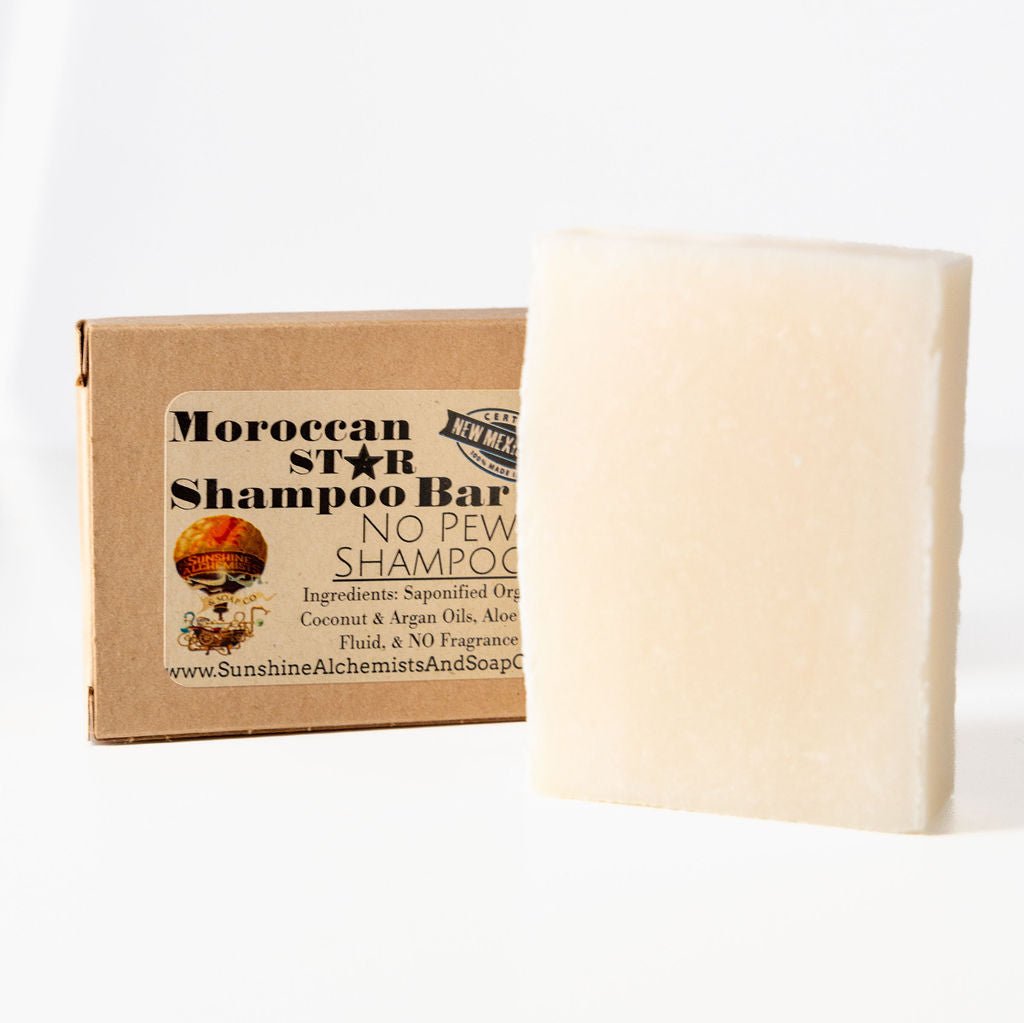









Let customers speak for us

Sube el volumen
Sin los residuos de champú y acondicionadores embotellados en las raíces y con la mejor salud del cuero cabelludo y el reequilibrio de los aceites naturales que se experimentan al usar una barra de champú orgánica, su cabello será más grueso y abundante a medida que crezcan nuevas hebras.
Brillante. Saludable. Naturalmente hermosa.
Ingredientes 100% sostenibles y de origen ético
Hecho a mano POR NOSOTROS
¿Sabías que hay marcas que venden productos “hechos a mano” que compran al por mayor, los reenvasan, les ponen su etiqueta y los venden a personas desprevenidas? Aquí, si dice hecho a mano, nos referimos a NUESTRAS manos.
Todas las noticias que vale la pena imprimir
Preguntas frecuentes de AKA
¿No es el aceite de palma un mal hoy en día?
El aceite de palma en sí nunca ha sido malo y el nuestro cuenta con la certificación RSPO de sostenibilidad . ¿Qué significa esto?
La Mesa Redonda para el Aceite de Palma Sostenible ha certificado que el aceite de palma que utilizamos proviene de pequeñas granjas tradicionales que han estado utilizando métodos de cultivo sostenibles durante generaciones .
En lugar de reaccionar de forma impulsiva a los problemas actuales, hemos optado por seguir incluyendo el aceite de palma, un maravilloso aceite con muchas propiedades valiosas y nutritivas para la piel, y hemos optado por profundizar un poco más en el tema y apoyar a las familias que dependen de la venta de sus cosechas para su subsistencia. De esta manera, hemos tomado una decisión que es buena para el planeta y también para nuestros semejantes del otro lado del mundo.
¡La supergrasa es lo mejor! (Por qué nuestro jabón NUNCA se seca)
Apuesto a que estás sentado allí preguntándote qué diablos significa súper grasa y qué tiene que ver con el jabón que suaviza e hidrata la piel seca e irritada.
Espera. Aquí viene lo más nerd. ¿Versión corta?
A LA PIEL LE GUSTA LA GRASA, POR ESO LE DAMOS UN POCO EN NUESTRO JABÓN.
Cuando haces jabón, calculas la cantidad precisa de hidróxido de sodio (sí, esto significa lejía y tiene que estar allí para que sea jabón, consulta la siguiente pregunta) que debe agregarse a los aceites y mantecas específicos de tu receta y las proporciones en las que aparecen en la fórmula.
Las grasas que utilizamos son aceites vegetales y mantequillas orgánicas de calidad alimentaria.
Si se deja una fórmula exactamente en esa proporción de 1:1, todos los aceites y mantecas se combinan con el hidróxido de sodio y se convierten en jabón. Sin embargo, si calcula que la cantidad de hidróxido de sodio que agrega a su receta es MENOR que la proporción de 1:1,
Los ácidos grasos (los deliciosos aceites y mantecas nutritivas descritas anteriormente) quedan disponibles para que la piel los absorba.
Nuestras formulaciones están calculadas en un 6% de supergrasa para barras corporales y faciales y un 20% para champús, jabones de manos y para mascotas.
Esos porcentajes de aceites y mantecas son los que quedan disponibles para que tu piel los absorba y lo que le da a nuestro jabón (junto con las proporciones exactas y las opciones de ingredientes base) sus mayores propiedades humectantes y emolientes.
Es por eso que nuestros jabones nunca harán que tu piel se sienta tirante, seca o escamosa.
Es súper gordo y eso es BUENO.
¿Puedo hacer que mi vela dure para siempre?
No.
Ella está aquí para pasar un buen rato, no por mucho tiempo, incluso con nuestra mezcla de combustión prolongada, especialmente si es su aroma favorito, pero PUEDE ayudarla a vivir su mejor vida siguiendo estos pasos:
- Encienda la vela durante el tiempo suficiente para que el baño de fusión se extienda por todo el diámetro del recipiente, especialmente la primera vez que la encienda. Esto evita la formación de túneles.
- Recorta la mecha a 1/4" antes de cada encendido. Esto reduce la cantidad de humo y extiende el tiempo de combustión de la vela.
- Encienda la vela en un lugar seguro. Colóquela sobre una superficie no inflamable, lejos de cortinas, adornos colgantes y debajo de armarios, etc.
- Mantenga la vela encendida lejos de los niños y las mascotas.
- Recomendamos no dejar encendida la vela más de 4 horas seguidas. Si se olvida y la mecha se desplaza hacia el borde del recipiente, vuelva a centrarla después de apagar la llama, pero mientras la cera aún esté tibia, utilizando una herramienta no inflamable, como un cucharón para mechas.
- No apague la vela con un soplido. Use un apagavelas, un mechero o incluso coloque suavemente la tapa sobre el recipiente para apagarla de modo que la cera caliente no salpique y se reduzca el humo.
- Deja que la vela se enfríe por completo una vez que la hayas apagado antes de tocarla o moverla. La temperatura promedio de una vela encendida es de 1800 grados. No queremos que tú ni tus seres queridos sufran daños.
- Te recomendamos que dejes de quemar tu vela una vez que la cera haya llegado a 1/4 de pulgada desde el fondo. Sabemos que muchas personas ignoran esta regla y si eres una de ellas, lo entendemos, quieres exprimir hasta la última gota de deliciosa fragancia de tu vela. Por favor , TEN EN CUENTA TU VELA. ¿Por qué? Si todo el charco de cera está en estado líquido en el fondo de tu recipiente con una mecha en llamas en el centro, toda la cera puede incendiarse a la vez, convirtiendo tu recipiente en una olla improvisada. No es lo óptimo. De ahí la sugerencia de no quemarla hasta el final, pero si debes hacerlo... ten cuidado.
- Guarde la vela con la tapa puesta y en un lugar fresco y seco cuando no la utilice. Esto evita que entre polvo y conserva el aroma.
¿Tu jabón tiene lejía?
Sí.
Todo jabón tiene lejía.
Si usas una barra o una cucharada de algo para lavarte la piel y no tiene lejía, es un detergente o surfactante y no jabón.
El hidróxido de sodio (lejía) saponifica (convierte en jabón) los aceites y las mantecas, y eso es la fabricación de jabón en sus términos más simples. Si no hay lejía (también puede ser hidróxido de potasio o incluso cenizas), no tienes jabón, tienes otra cosa.
No tengo dudas, pero si estás comprando jabón hecho a mano y la persona que te lo vende te dice que no tiene lejía, no es fabricante de jabón.
Es posible que hayan comprado una base para derretir y verter y la hayan usado para "hacer" jabón y no entiendan que la base ya tiene lejía o pueden comprar su jabón y volver a envasarlo y no entender sus ingredientes, es decir, los ingredientes dicen aceites y mantecas xy&z saponificados, lo que SIGNIFICA que se aplicó lejía (hidróxido de sodio o potasio) para convertir esos ingredientes de la base en jabón.
Por último, no tengáis miedo del jabón elaborado con lejía.
Un jabón bien elaborado tiene una cantidad muy precisa de lejía calculada en función de los aceites y mantecas exactos y sus pesos y, en el caso de nuestro jabón, reducimos esa cantidad para que el 6% de los maravillosos y nutritivos aceites y mantecas vegetales orgánicos que utilizamos estén disponibles DESPUÉS de la saponificación para que su piel los absorba.
Por eso son tan hidratantes.
Te tenemos cubierto.










